Revolution London Conference:
|
Eric Lithun was speaking for the seaplane OEM contingent at the Revolution London conference last week.
We’d just heard about the mounting costs of developing new eVTOL aircraft* - some ballooning to nearly US$1.5bn (per programme). Not to mention an estimated £330m to construct new vertiports.
Against this backdrop, Elfly of Norway, Jekta of Switzerland and Ocean Aircraft, UK, are on a mission to convince investors, believing they can capture a fair share of the emerging regional air mobility market with a viable, sustainable and lower cost air transport solution.
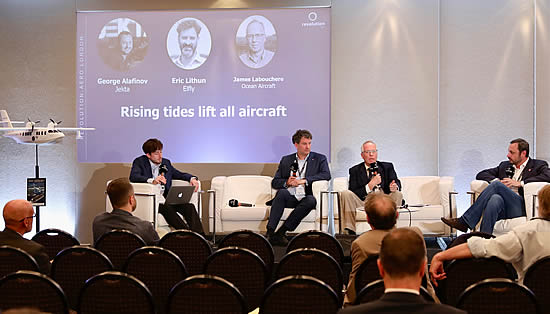
Seaplane proponents at Revolution.aero with moderator Yves Le Marquand. Originally from Alderney, Yves has a special interest in boats / and seaplanes.
“There are 500,000 miles of coastline globally and another 500,000 miles of navigable river and lake shoreline," stated James Labouchere, Managing Director of Ocean Aircraft. "The majority of the population lives within seven miles of water. Many people take holidays by the sea too, creating a lot of potential for developed and developing markets.”
And yet, aviation today isn’t so good at serving it, added Eric Lithun. Commercial next gen electric seaplane operations don’t need costly infrastructure, just a small pontoon with chargers, dockside, he said.
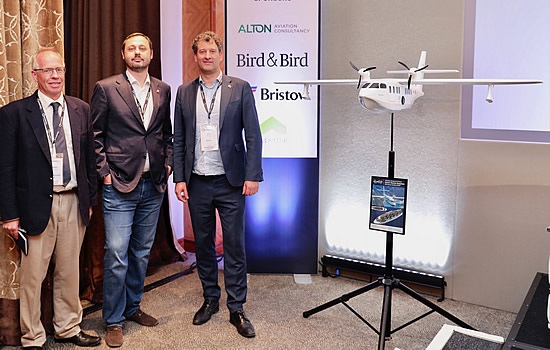
Left to right: James Labouchere, Managing Director, Ocean Aircraft; George Alafinov, Managing Director, Jekta and Eric Lithun, CEO, Elfly Group - with model of Noemi.
“Developing a purpose-built vehicle for saltwater conditions will change the whole business case for seaplanes,” he highlighted. “Today’s floatplanes (fixed wing aircraft with floats) are built for land, which drives the cost tremendously.” (A Twin Otter floatplane costs three times as much flying on the water vs land.) “We can cover regional air mobility and urban air mobility; take our amphibious aircraft on water / or to a city airport, wherever passengers want to go,” stated Eric.
Consider Indonesia, home to 250 million people, with 100 Islands, added George Alafinov, Managing Director of Jekta. “Its population relies on boats to move around. In 2019, 135 million passengers travelled in and out of Indonesia. If we could capture just 1% of that, that’s 1.3 million people connecting those islands. It would be easy to set up because the ‘runway’ is already there.” Then there’s Greece, Norway, Florida, Canada, Japan, etc. We are only limited by our imagination.”
“We are certifiable - now.”
An important issue is that these new electric seaplanes are certifiable to both VFR and IFR conditions, today. Huge amounts of funding have been poured into eVTOLs that don’t have the regulations to certify, so they have a lot of work to do to get certificated. “We are working within the rules and regulations of today. We will be able to operate on and off water because inevitably there’s going to be storms and bad weather, wherever you are. Being able to fly in IFR conditions is something older seaplanes, in general, haven't been able to do,” said Eric.
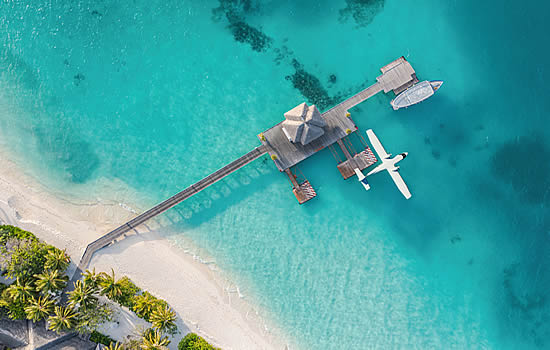
Artist's impression of Elfly's Noemi (no emissions) electric seaplane in the Maldives.
Moderator, Revolution.aero Editor Yves Le Marchand, wanted to know about charging. You’ll probably want to power up where you land, Eric replied. In Norway, there’s good power, because our electric boats are already connected to the power grid. The goal is to keep most of the infrastructure on the floating side, so if it doesn't work somewhere, you can move it. If setting up an operation in Indonesia and it doesn't work, you could, theoretically, just move it to Vietnam and connect it there instead.
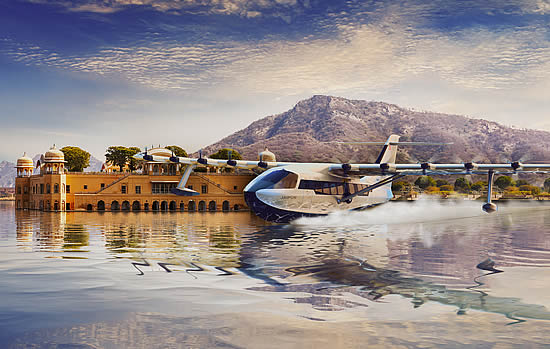
Jekta celebrated an order with Indian seaplane operator Maritime Energy Heli Air Services Pvt. Ltd. (MEHAIR) for 50 of its next-generation seaplanes.
“That’s a good point,” said George. “Assuming that most of our customers (about 60-70%) are going to be aircraft leasing companies, such flexibility in an asset will enable them to move aircraft ownership country to country, easily. For island nations, there are already existing solar floating stations as used in India and the Maldives currently.” (The Maldives is the biggest seaplane market with the world’s largest seaplane operator, Trans Maldivian, alone operating over 65 Twin Otter floatplanes).
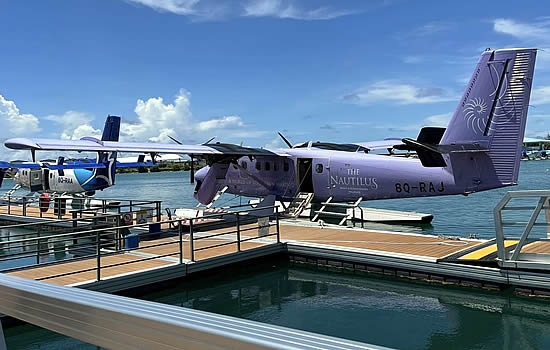
Trans Maldivian DHC Twin Otter floatplanes - the world's biggest seaplane operator.
“We’ve conducted research that identifies optimal operating regions by comparing the cost of electricity for our PHA-ZE 100 seaplane, compared with specific hourly Jet A consumption for a turboprop. Where electricity is cheap, there’s a significant cost advantage. Electricity is cheap across much of Africa, India and Asia, so powering an electric aircraft in these regions will deliver real operating costs advantages,” he added.
One anonymous delegate (on Slido) wanted to know about a feature of another (sea glider) programme, which has attracted considerable funding from Silicon Valley. (It uses an aerodynamic principle known as wing-in-ground effect to skim the sea’s surface at high speeds, while hovering a few metres above the water. When in port, the hull sits on the water - just like a boat).
"It is a boat and will be certified as such by the US Coast Guard," said Eric. “We've done a lot of flying in WIG effect, and it’s a very difficult place to be,” said James “You’d want to get out of it as soon as possible.” It doesn’t work, stated George, pointing to failed attempts with WIG in Russia, China, Switzerland and the USA. “There is a certain limit to the minimum size of the wing needed to create this effect and continue horizontal flight, and that’s the issue. On the flip side, he said, the programme has attracted a lot of attention “toward the market we are going after.” Our goal is to bring back a mode of air transportation that hasn’t been updated for decades, George added.
Next gen seaplane OEM association
Pro-actively, Jekta is in the throes of spearheading a new association for next generation seaplane and amphibious aircraft builders with no fewer than 10 electric/hybrid electric and traditional designs positioning from all over the world. They gathered in Venice in March for the inaugural Future Opportunities in Seaplanes and Amphibious Aircraft Conference, organised by Quaynote Communications and Arena Group. Plans are now shaping for the second event, most likely in Miami, in Spring 2025.
eVTOL programmes continue to absorb money
An earlier Rev London panel ‘Where are we in the hype cycle’ of investment, shared that eVTOL programmes are now costing considerably more than the US$1bn figure estimated in 2023. Panelists Sergio Cecutta, SMG Consulting; Lewis Cronin from the UK’s Aerospace Technology Institute (ATI), Oscar Watkins from ICF, and Siyi Hao from Roland Berger agreed the sector has done a very good job in ‘selling the vision of the sector.’ The realism, however, is that first-generation battery technology is not developing as quickly as needed and nor is it sufficient for the power (especially in take-off) needed for eVTOL use.

BlueSky Business Aviation News | 27th June 2024 | Issue #754



